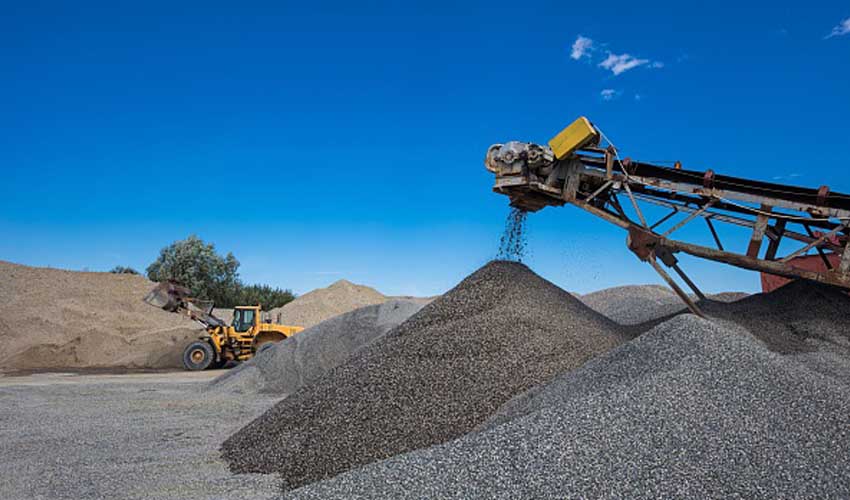More than 250 rare earth minerals are discovered worldwide, of which 50 to 60 types have industrial value. Rare earth minerals are the general term for the basic constituent elements of minerals and various metal elements. They are present in the mineral lattice as ionic compounds and constitute the indispensable components of minerals. However, there are many kinds of rare earth minerals, the most important of which are bastnaesium (lanthanum) ore, monazite, xenotime, ion adsorption type rare earth ore, yttrium niobium ore, etc. Rare earths are strategic key metal mineral resources in countries around the world. These elements are the primary raw materials for countless high-precision industries and are of great economic value. However, rare earth ores themselves have complex mineral properties. The grades of all mineralizing elements in these deposits are relatively low, which makes it difficult to develop and utilize them, and the difficulty of rare earths beneficiation naturally increases.
What is a rare earth ore?
Rare earth ore, also known as rare earth element ore or rare earth metal ore, contains various rare earth elements. It mainly contains lanthanum, cerium, praseodymium, neodymium, promethium, samarium, europium, gadolinium, terbium, dysprosium, holmium, erbium, thulium, ytterbium, lutetium; it is also a general term for 17 metal elements such as scandium and yttrium. This type of mineral includes monazite, fluorocarbon cerium, xenotime, fluorite, zircon, etc. Rare earths are known as the “gold” of industry and are considered the most widely used and important metals. These elements have unique magnetic, catalytic, and optical properties. Among them, rare earth elements are contained in electronic products, military equipment, wind turbines, electric vehicles, etc., and their importance can be imagined.
Function
Rare earth ores are not just limited to a few applications. They are the backbone of building ceramics, permanent magnetic materials, vacuum detection and satellite auxiliary energy, manufacturing colored lenses and optical filters, medical magnetic resonance imaging signals, fiber lasers, and more. This versatility is a testament to their importance and widespread use.
Let’s take a closer look at two essential elements and lanthanum. These are not just rare earth elements, but also important catalysts used in petroleum refining and diesel pollutant reduction agents. They also find their way into piezoelectric materials, electrothermal materials, thermoelectric materials, magnetoresistive materials, arc electrodes, and special glass. This is just a glimpse of the diverse applications of rare earth elements.
In addition, rare earths can also be used in aerospace (such as laser guidance systems), petroleum catalysis, automobile exhaust catalysis, functional ceramics, chemical additives, steel, medicine, agriculture, and other fields, which can be said to be all-encompassing.

Rare earth ore beneficiation method
Rare earth ore dressing generally adopts flotation method, and is often supplemented by gravity separation and magnetic separation to form a variety of combined beneficiation process.
1. Flotation method
Flotation is the main method of rare earth beneficiation. It uses the difference in physical and chemical properties between rare earth minerals and primary minerals to separate them from associated gangue and other minerals to obtain concentrate. Rare earths often coexist with calcium and barium gangue minerals during weathering. The floatability of this type of gangue is similar to that of rare earths. By adding flotation agents and relying on the buoyancy of bubbles, ideal beneficiation indicators can be obtained. After the beach sand is re-selected, the flotation process is often used to obtain rare earth concentrate from heavy ore sand.
2. Gravity separation
The difference in density between rare earth minerals and gangue minerals is used for separation. It is mainly aimed at the separation of rare earth minerals from low-density gangue minerals such as quartz and calcite. The roughing operation adopts a gravity separation process based on spiral chutes. The concentrating operation is to first use a shaking table to select, and then separate into monazite, ilmenite, zircon, xenotime, rutile and other minerals according to the recovery requirements. Commonly used gravity separation equipment includes spiral chutes, shaking tables, centrifugal concentrators, etc.
3. Magnetic separation
Most rare earth metals are paramagnetic minerals with weak magnetism. The difference in magnetic susceptibility between them and associated gangue and other minerals can be used to separate rare earth minerals from other minerals using magnetic separators with different magnetic field strengths. Strong magnetic separators are often used to achieve pre-enrichment of rare earth ores.
Although rare earth ores have complex mineralogy, high requirements for mineral processing technology, and difficult concentrate extraction. The beneficiation of rare earth ores is a complex process that requires a combination of physical and chemical methods. Valuable rare earth minerals can be separated from gangue minerals through processes such as gravity separation, magnetic separation, and flotation. These methods are essential for extracting rare earth elements necessary for various technological applications. Mining industry stakeholders must prioritize the use of advanced beneficiation methods to achieve a more efficient and environmentally friendly rare earth ore processing industry. JXSC supports customized rare earth ore beneficiation processes and equipment, contact us for more details!